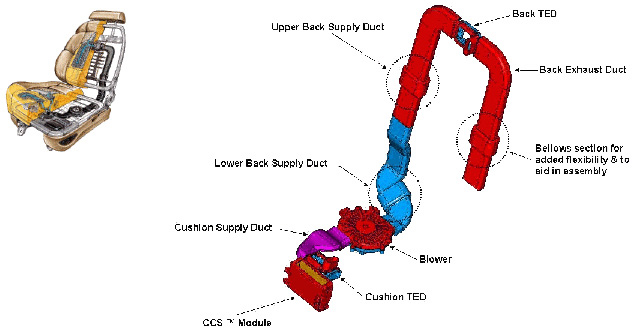Number 4 "Thermoelectric Air Conditioner----50-year Dream"
One of the great advantages of thermoelectric system is "can be made thin". Therefore, installing "a thin, plate-like cool/heat system in the wall" could lead to a comfortable temperature anywhere you are in that room.
This time, I would like to write on "Thermoelectric Air Conditioner", which has been, or may have been, a dream of 50 years for the people engaged in thermoelectricity since the discovery of Bismuth Telluride thermoelectric semiconductor.
Nothing can start without the electricity generator!
As the electricity itself was not yet used as'energy' at the time of the discovery of Peltier effect(1834), it was natural there was no idea to use this phenomenon for refrigerator or air conditioner. Just three years ago(1831) Peltier effect was found, Michael Faraday, a Briton, had discovered the law of practical electric generation, or electrical induction. It took over 50 years from this discovery to the commercialization of alternate current electricity generator.
The first practical use of electricity as'energy' probably was the incandescent lamp jointly developed, in about 1880, by Thomas A. Edison, American inventor of genius, and Englishman Joseph Swan. The DC(direct current) system was still used at that time, however the AC(alternate current) generator, invented by Nikola Tesla, American, was put into commerce and the modern AC generator-transformer transmission system was introduced for the first time by Westinghouse Company established in 1886 by Jeorge Westinghouse, American. The power to work the generator was a steam condensing piston engine invented by Englishman, James Watt.
Quick R&D on refrigerator and air conditioner----and a dissapointment
In 1954, people had ideas to make thermoelectric refrigerator or air conditioner about 70 years later from the first commercial AC generation. In this year, N.E. Lindenblad, American, made a small refrigerator using lead/telluride(PbTe) and antimony/telluride(SbTe) as the thermoelectric junctions. In the same year, H.J. Goldsmid et al, at General Electric Company, got a remarkable Δƒ¢T of 26°C, never obtained before, using Bi2Te3/Sb2Te3 as the P type and Bi as the N type. In the next year, 1955, his group obtained an outstanding ƒ¢T of 46°C with the thermoelectric junction of P and N type bismuth telluride. This rapid performance enhancement of bismuth telluride made this material to be a great expectancy with far better performance.
From this reason, experimental fabrication of refrigerators and air conditioners, targeting at future use of them in offices and homes, were aggressively done, like RCA and Westinghouse, by many firms everywhere in the world. Photo 1 shows the wall of thermoelectric cool/heat room constructed at that time in RCA. Photo 2 shows a thermoelectric cool/heat panel experimentally produced by Westinghouse. Wow, it adventurously equipped with EL(electro luminescence) lighting, just very recently becoming commercial product. In photo 3, you can find very early experimental air conditioner and refrigerator fabricated by the ancestor company of KELK Ltd.. All these prototype air conditioners and refrigerators were not worth to be called as their names in their performances, but were too-early design of concept overreacted to an optimistic success scenario of R&D on high performance bismuth telluride material.
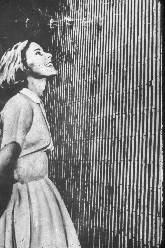
Photo 1 The wall of thermoelectrically air conditioned room(RCA, 1950s)
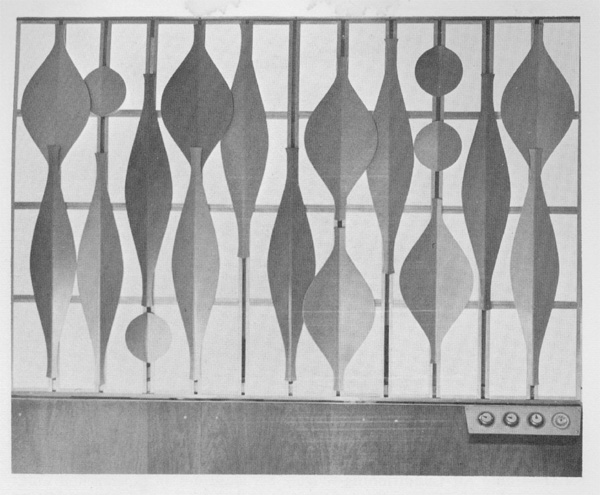
Photo 2 The panel installed with thermoelectric cooler/heater along with EL(electronic luminescence) lamps(Westinghouse, 1960s)
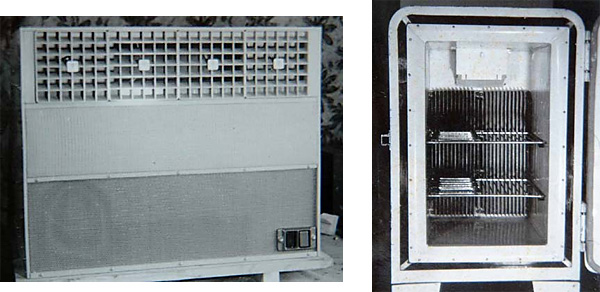
Photo 3 The air conditioner and refrigerator experimentally made by the ancestor firm of KELK Ltd.(1958)
Air conditioner for vehicles
Almost all transportation vehicles in developed countries today have air conditioner(s), although, in Europe, vehicle often doesn't have it because of climate conditions. It was relatively early people had idea to install thermoelectric air conditioner into transportation vehicles. Photo 4 shows a car thermoelectric air conditioner tested in 1958 by KELK Ltd.. This experimental equipment did not have ability to cool the whole inside of a car, instead it had a structure to blow cool air only to the vicinity of passenger's face. A passenger's comment was "Much cooler to open the windows!"
A thermoelectric air conditioner to cool/dry back and thigh portions of the car seat was recently commercialized by Amerigon Inc. as an option of luxury cars(Fig1). However, it needs conventional air conditioner to cool down whole inside, and seat air conditioner is an assistance for better comfort. France has a rare example of a railroad car air conditioner developed from 1973. The equipment has 12KW cooling power and 16KW KW heating power, and has been operating to today. The United States and France have once experimentally operated large, 10 to 30KW, thermoelectric equipment to cool rooms and electronic cabinets inside submarines.
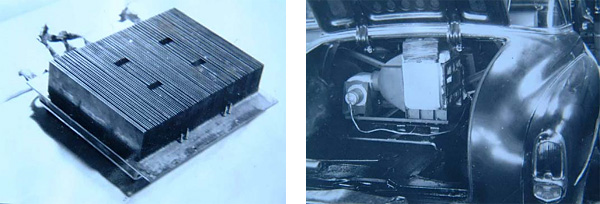
Photo4 The car air conditioner experimentally made by the ancestor company of KELK Ltd. installed in a Chrysler's trunk(1954)
Performance target of Bismuth Telluride
The expected performance target of Bismuth Telluride was, naturally, the performance of compressor type chillers. The expected figure of merit Z then was 5 to 8(×10-3K-1). It was assumed that the figure of merit of the material Mr. Goldsmid developed was 1.5. It is widely known that this figure doubled today, but still hovering around 3.0, far less to the initial target.
CFC ban--------a following wind
Though thermoelectric refrigerator and air conditioner once seemed hopeless, they were put on to the stage again in 1987 when the Montreal Protocol banning CFCs destroying ozone layer has been admitted. Especially in Japan, researches and developments concerning performance increase of thermoelectric materials and efficiency of thermoelectric systems were earnestly pursued. As the result, not large but significant progress has been observed. Figure of merit of mass production bismuth telluride thermoelectric material has enhanced to around 3.0, yet much less than that of compressor. As for the efficiency of the systems, effort to reduce thermal resistances of the parts and interfaces has been done to maximize the material performance. Today, small refrigerators, appealing quietness for hotel rooms, hospital sickrooms and personal use are being produced with a significant volume. For industrial use, meanwhile, small-and-thin designed "thermoelectric chiller" and "thermoelectric temperature/humidity air conditioner" are now being used in semiconductor process.
But, a high performance material to realize "Thermoelectric Air Conditioner" compatible to compressor-type one is not found so far. It looks necessary to wait for a considerable length of time.
Note: All photos are by courtesy of Dr. Kin-ichi Uemura. Some part of the content was quoted from the book "Thermoelectric Semiconductor and Its Application" written by Kin-ichi Uemura/Isao Nishida.


